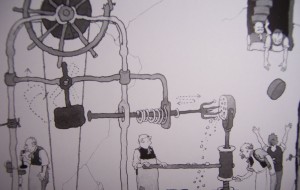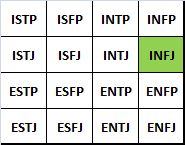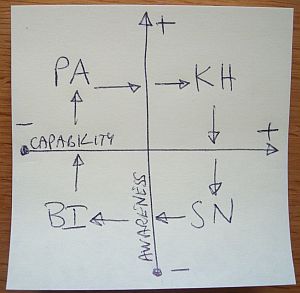Imagine you are a hospital doctor. Some patients die. But how many is too many before you or your hospital are labelled killers? If you check out the BBC page
Can We See the Wood for the Trees?
 “The Map is not the Territory” but it is a very useful because it provides a sense of perspective; the bigger picture; where you are; and what you would need to do to get from A to B. A map can also provide the the fine detail, they way-points on your journey, and what to expect to see along the way. I remember the first computer programs that would find a route from A to B for me and present it as a printed recipe for the journey; how far it was and, best of all, how long it would take – so I knew when to set off to be reasonably confident I could arrive on time. Of course, there might always be unexpected holdups along the way but it was a big step forward. One problem was using the recipe as I drove, and another was when I accidently took a wrong turn, which is easy in unfamiliar surroundings with only a list of instructions to go by. If I came off the intended track I would get lost – so I still needed the paper map as a backup. The trouble now was I did not alwasy know where I was on the map – because I was lost. Two steps forward and one step backwards. Now we have Google Maps and we can see what we will actually see on the way – before we even leave home! And with SatNav we can get this map-reading-and-route-planning done for us in real time so if we choose to, are forced to, or accidentially take a wrong turn it can get us back-on-track. The days of heated debate between the map reader and the map needer have gone and it seems the only need we have for a map now is as a backup if the SatNav breaks down. (This did happen to me once, I didn’t have a map in the car and the only information I had was the postcode of my destination. I was pressed for time so I drove around randomly until I passed a shop that sold SatNavs and bought a new/spare one – entered the postcode and arrived at my intended destination just in time!).
“The Map is not the Territory” but it is a very useful because it provides a sense of perspective; the bigger picture; where you are; and what you would need to do to get from A to B. A map can also provide the the fine detail, they way-points on your journey, and what to expect to see along the way. I remember the first computer programs that would find a route from A to B for me and present it as a printed recipe for the journey; how far it was and, best of all, how long it would take – so I knew when to set off to be reasonably confident I could arrive on time. Of course, there might always be unexpected holdups along the way but it was a big step forward. One problem was using the recipe as I drove, and another was when I accidently took a wrong turn, which is easy in unfamiliar surroundings with only a list of instructions to go by. If I came off the intended track I would get lost – so I still needed the paper map as a backup. The trouble now was I did not alwasy know where I was on the map – because I was lost. Two steps forward and one step backwards. Now we have Google Maps and we can see what we will actually see on the way – before we even leave home! And with SatNav we can get this map-reading-and-route-planning done for us in real time so if we choose to, are forced to, or accidentially take a wrong turn it can get us back-on-track. The days of heated debate between the map reader and the map needer have gone and it seems the only need we have for a map now is as a backup if the SatNav breaks down. (This did happen to me once, I didn’t have a map in the car and the only information I had was the postcode of my destination. I was pressed for time so I drove around randomly until I passed a shop that sold SatNavs and bought a new/spare one – entered the postcode and arrived at my intended destination just in time!).
So is the map dead? Not at all – the value of a map in providing a sense of perspective, context and location is just as useful as ever. And there are many sorts of maps apart from the static, structural, geographical maps ones we are used to. The really exciting maps are the dynamic ones – the functional maps. These are maps that show how things are working and flowing, not only where they are. Imagine if your SatNav had both a static map and was able to access a real time dynamic map of traffic flow. Just think how much more useful it could be? However, to achieve that implies that each person on the road would have to contribute both their position and their intended destination to a central system – isn’t that Big Brother back. Air traffic control (ATC) systems have done this for years for a very good reason: aeroplanes full of passengers are perishable goods – they can’t land anywhere they like and they can’t stay up there waiting to land for ever. You can’t afford to have traffic jams with aeroplanes – so every pilot has to file a flight plan and will only be given ATC clearance to take off if their destination is capable of offering them a landing slot in an acceptable time frame – i.e. before the plane runs out of fuel! Static maps will always be needed to provide us with a sense of perspective – and in the future dynamic maps will revolutionise the way that we do everything – but only if we are prepared to behave collectively and share our data. We want to see the wood, the trees and even the breeze through the leaves!



